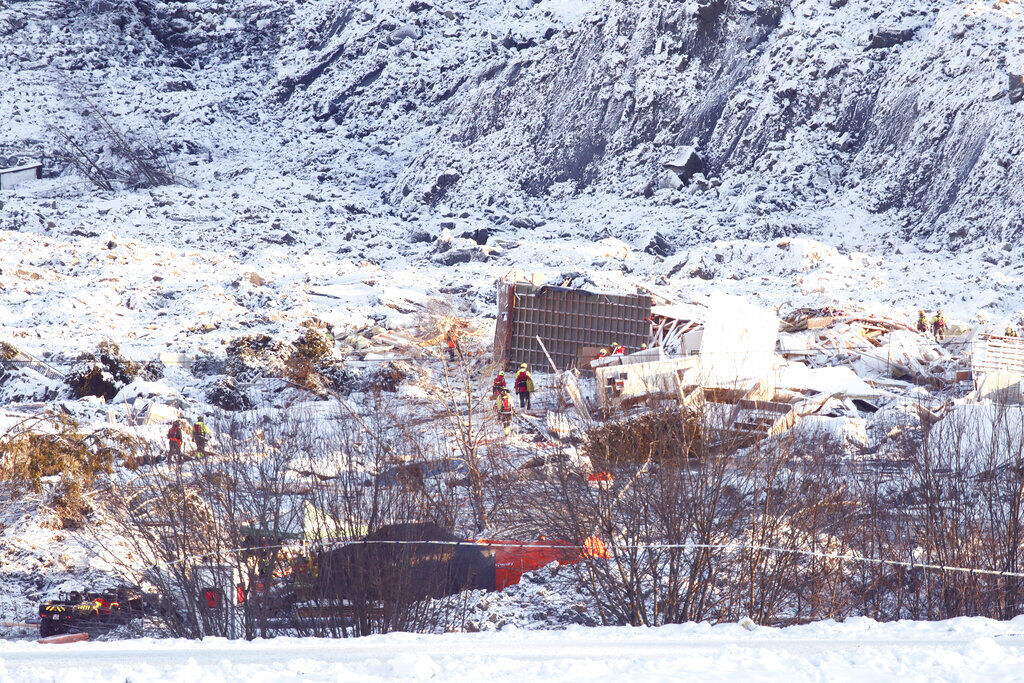
COPENHAGEN, Denmark (AP) — Norwegian officials insisted Monday that there was "still hope"
ofnfinding survivors in air pockets five days after a landslide killed at least seven people as it
carried away homes in a village north of the capital. Three people are still missing.
Police spokesman Roger Pettersen said search efforts in the landslide-hit village of Ask, 25 kilometers
(16 miles) northeast of Oslo, are still considered "a rescue operation." But only bodies have
been found in the past few days.
The region’s below-freezing temperatures are "working against us, but we have been very clear in our
advice to the (rescuers) that as long as there are cavities where the missing may have stayed, it is
possible to survive," said Dr. Halvard Stave, who is taking part in the rescue operation.
Temperatures in Ask were minus 8 degrees Celsius (17.6 degrees Fahrenheit) on Monday.
"I would still describe the situation as very unreal," said Anders Oestensen, the mayor of
Gjerdrum municipality, where Ask is located.
Authorities said one victim was found Friday, three more on Saturday and three others Sunday. Ten people
have been injured, one of them seriously.
Search teams patrolled with dogs as helicopters and drones with heat-detecting cameras flew over the
ravaged hillside in Ask, a village of 5,000 that was hit by the worst landslide in modern Norwegian
history. At least 1,000 people were evacuated.
The landslide early Wednesday cut across a road through Ask, leaving a deep, crater-like ravine. Some
buildings are now hanging on the edge of the ravine, which grew to be 700 meters (2,300 feet) long and
300 meters (1,000 feet) wide. At least nine buildings with over 30 apartments were destroyed.
"This is completely terrible," King Harald V said after the Norwegian royals visited the
landslide site on Sunday.
The limited number of daylight hours in Norway at this time of year and fears of further erosion have
hampered rescue operations. The ground is fragile at the site and unable to hold the weight of heavy
rescue equipment.
The exact cause of the accident is not yet known but the area is known for having a lot of quick clay, a
material that can change from solid to liquid form. Experts said the quick clay, combined with excessive
precipitation and damp winter weather, may have contributed to the landslide.
In 2005, Norwegian authorities warned people not to construct residential buildings in the area, saying
it was "a high risk zone" for landslides, but houses were eventually built there later in the
decade.
Norway’s biggest landslide was in 1893 in Verdal, north of Trondheim in mid-Norway and killed 116 people,
the VG newspaper reported. It was reportedly up to 40 times bigger that the one in Ask where somewhere
between 1.4 million and 2 million cubic meters of land tumbled down.

